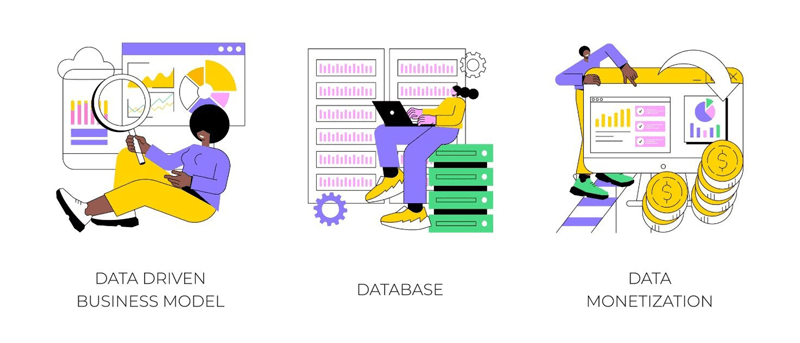In today’s rapidly evolving world, every industry is constantly seeking innovative ways to improve performance and drive efficiency. The oil and gas industry is following the same path. Due to the extremely volatile nature of oil prices, sustainable performance is the need of the hour. In the era of data, the oil and gas sector has been presented with a groundbreaking opportunity to revolutionize its operations.
Although the oil and gas industry growth has always been driven by the latest and greatest technologies; however, the industry has always been riddled with manual processes and disconnected workflows. Now, there is a new way of working that harnesses cutting-edge technologies to streamline and connect workflows and enhance productivity. This digital transformation promises not only improved operational efficiency but also real-time decision-making based on data analytics.
I will explore the concept of digital transformation in the oil and gas industry and how it impacts the current way of working which is leveraging the human experience. The industry generates vast amounts of data, and it has become extremely important to take advantage of that by utilizing advanced technologies to visualize the underlying inefficiencies and predict the failures in the future.
Are you ready? Let’s embark on this exciting journey into the world of digitalization in oil and gas.

A New Way of Working
Traditionally, the oil and gas industry has operated in a structured and hierarchical manner, with processes that were often time-consuming and paper-based. Just like any industry, the oil and gas industry aspires to improve its operations in terms of efficiency, productivity, logistics and sustainability.
Digitalization has paved the way for automation, streamlining and connecting workflows, and reducing manual intervention. This means that tasks that previously took days or even weeks to complete can now be done in a matter of hours or minutes. The use of digital tools such as cloud computing, artificial intelligence (AI), and Internet of Things (IoT) devices have made it possible to collect real-time data from various sources and perform fast computing, enabling faster decision-making.
One of the most important aspects of this new way of working is the concept of “digital twins.” A digital twin is essentially a virtual replica or a simulation of physical assets such as drilling rigs, production facilities or pipelines. By creating these digital twins, operators can monitor their performance in real time, identify potential issues before they occur, and make informed decisions regarding maintenance or repairs to reduce overall downtime.
Another important aspect enabled by digitalization is data analytics. With vast amounts of data being generated every day across different aspects of oil and gas operations, companies are using advanced analytics techniques to derive insights from this information. These insights can then be used to optimize production processes, improve safety measures, reduce costs and enhance overall performance.
The new way of working brought about by digitalization in the oil and gas industry offers numerous benefits including improved efficiency, sustainability and cost-effectiveness.
 Data-Driven Decisions
Data-Driven Decisions
The data-driven decision-making has emerged as a game-changer for the oil and gas industry. Relying solely on intuition and past experience to make important business/operation decisions is an old and obsolete way of working. Today, like other sectors, operators in the oil and gas industry are harnessing the power of data analytics to drive their operations forward.
By utilizing advanced technologies, such as artificial intelligence and machine learning algorithms, the operators can collect vast amounts of real-time data from various sources within their operations. This data is then analyzed and transformed into actionable insights that inform decision-making processes.
The area where data-driven decision-making has proven particularly beneficial is in optimizing performance and risk management. By analyzing operational data, companies can identify inefficiencies, bottlenecks or areas of improvement within their workflows. This enables them to make informed decisions about process optimization strategies, ultimately leading to increased efficiency and cost savings.
Another key advantage of leveraging data-driven decision-making is its impact on sustainability efforts. Connected assets and sensors can provide a better understanding of a carbon footprint and, with access to accurate real-time information about energy consumption patterns or emissions levels, companies can develop targeted initiatives aimed at reducing their carbon footprint.
Moreover, digitalization also facilitates the implementation of digital twin technology – virtual replicas that simulate physical assets like drilling platforms or pipelines in real time – enabling operators to better predict maintenance needs and optimize asset utilization while minimizing downtime risks.
Embracing data-driven decision-making has become crucial for staying competitive in today’s fast-paced oil and gas industry. The ability to leverage advanced analytics tools provides valuable insights that drive performance improvement initiatives while contributing toward sustainable practices. As digitization continues to shape this sector’s future landscape, those who embrace it will undoubtedly be positioned for success.
With automated and connected workflows, digital twins and data-driven decision-making, this transformation enables companies to stay ahead in an increasingly competitive market.
This shift toward digitized processes not only accelerates project completion but also enhances operational efficiency, reduces downtime and minimizes environmental impact.
Revolutionizing the Technological Landscape
In this digital transformation era, the oil and gas industry is embracing technological advancements to drive sustainability and performance improvement. Digital transformation has revolutionized the industry’s way of working and enabled it to harness the power of data-driven decision-making.
By adopting digital workflows and leveraging technologies, such as digital twins and real-time data analytics, companies can streamline operations, optimize production processes, and enhance overall efficiency. The ability to monitor assets remotely in real time allows for proactive maintenance, reducing downtime and minimizing costs.
Digitalization empowers oil and gas professionals with valuable insights that help them make informed decisions quickly. Predictive analytics, coupled with various insight tools, help engineers quickly analyze vast amounts of data collected from sensors installed across facilities and operations. This enables engineers/key stakeholders to identify potential issues before they escalate into costly problems. This improves operational efficiency and safety standards significantly.
Furthermore, digitalization opens up new opportunities for collaboration within the sector. With shared access to data platforms, stakeholders across different departments or even organizations can collaborate seamlessly on projects or solve complex challenges together.
Digitalization is a necessity for survival in today’s competitive landscape. Embracing digital workflows, leveraging advanced technologies like digital twins and real-time analytics enables oil and gas companies to unlock unprecedented productivity levels while simultaneously driving sustainability efforts forward. The possibilities offered by data-driven decision-making are endless – empowering stakeholders with actionable insights that lead to improved operational efficiencies like never before seen. So, let us embrace this wave of change wholeheartedly because staying relevant means staying ahead.
Mohit Kumar began his remarkable journey in a small village near Agra, India, and today is an oil and gas industry leader in Anchorage, Alaska.
Growing up in a farming family, he overcame numerous obstacles and emerged as one of the top performers in the prestigious IIT-JEE examination, securing the 3303rd All India Rank out of over 700,000 students. This achievement paved the way for him to study petroleum engineering at the Indian Institute of Technology (ISM), Dhanbad, from where he graduated with honors in 2008.
Today, Kumar serves as an account manager for one of the world’s largest oilfield service companies, residing in Alaska. Progressing from project manager to account manager within a year of joining the company, his expertise lies in building and executing value-based commercial models to deliver cutting-edge technological solutions in the oil and gas industry, contributing to the growth and success of his organization in Alaska.
Oil and gas operations are commonly found in remote locations far from company headquarters. Now, it's possible to monitor pump operations, collate and analyze seismic data, and track employees around the world from almost anywhere. Whether employees are in the office or in the field, the internet and related applications enable a greater multidirectional flow of information – and control – than ever before.






